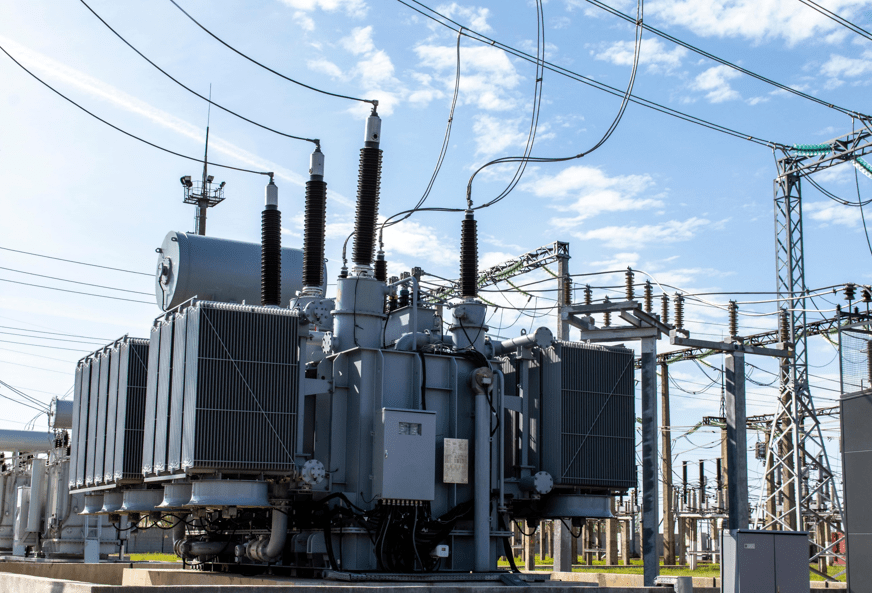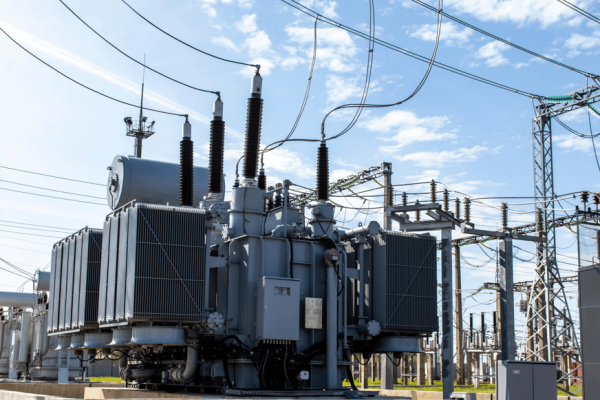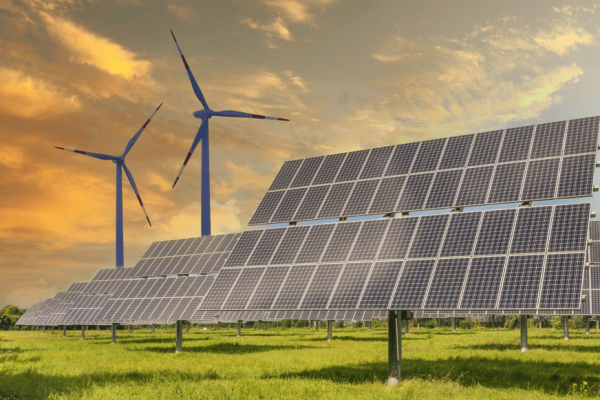Power generation reaches 53.7bn kWh in January-July, up by 1.7% year on year. Gas turbine power plants with a capacity of 100,000 kW worth KZT18.6bn were commissioned in the first half of the year
16 September 2016
1539

Electricity tariffs went up by 5.8% year on year in August.
Power generation totalled 53.7bn kWh in the first seven months, up by 1.7% year on year.
The top three regions in terms of power generation were Karaganda Region (up by 0.8% to 8bn kWh) and East Kazakhstan Region (up by 15.7% to 6bn kWh). Pavlodar Region, which accounts for over a third of total power generation, on the contrary, reduced output by 5.7% to 18.9bn kWh.
Events: According to a report by the Kazakh operator of the electricity market KOREM, the following regions increased power generation in the first half of 2016 compared to the same period of last year: South Kazakhstan Region – up by 25%, Aktobe Region 19%, North Kazakhstan Region 18%, Akmola Region 13%, East Kazakhstan Region 13%, Almaty Region 9%, Atyrau Region 3% and Mangistau Region 2%.
Growth in generation was thanks to the commissioning of new generation capacities. South Kazakhstan Region commissioned solar power stations – Ochistnoy and Akbay by Aksu-Energo LLP. Akmola Region commissioned the Yereymentau wind power station with a capacity of 45 MW by PVES LLP, while Astana-Energy joint-stock company increased power generation in the first half of 2016. Aktobe Region commissioned ARBZ gas valve power station. Growth in generation in East Kazakhstan Region and Almaty Region in the first half of 2016 was thanks to increase in generation by hydropower stations as a result of growth in water discharge. Growth in power generation in North Kazakhstan Region in the first half of 2016 was a result of increase in capacity at PPTEC-2 of SevKazEnergo which commissioned a new turbine with a capacity of 63 MW.
The highest growth in power generation in the first half of 2016 compared to the same period of 2015 was recorded by solar power stations (by 900%) and wind power stations (by 700%). The share of wind and solar power stations in total power generation increased in the past year by 900% to stand at only 0.4%.
Growth in wind and solar power stations was a result of the commissioning of new capacities in 2015. In Zhambyl Region the Korday wind power station commissioned 17 wind mills with a total capacity of 17 MW. In this region the Burnoye solar power station with an installed capacity of 50 MW was commissioned. In Zhambyl Region the Korday wind power station was also commissioned with two wind mills with an installed capacity of 2.6 MW by Vetroinvest LLP. In South Kazakhstan Region Akbay and Ochistnoye solar power station with an installed capacity of 0.95 MW each were commissioned. In Kyzylorda Region the SKZ-U solar power station with an installed capacity of 0.42 MW was installed. In North Kazakhstan Region the wind power station-2 with an installed capacity of 2 MW and wind power station-1 with an installed capacity of 3.5 MW were installed by Zinchenko & Co. In Akmola Region the Yereymentau wind power station with an installed capacity of 45 MW was installed.

In the first six months of 2016, gas turbine power stations with a capacity of 100,000 kW was commissioned in West Kazakhstan Region. These facilities cost KZT18.6bn.
Steam turbines (part of a turbine unit) with a capacity of 35,000 kW was also commissioned. It cost KZT1.4bn.
A total of 237.2 km of power transmission lines with voltage of 220 kV and over were commissioned (KZT13.7bn), 53.4 km of lines with voltage of 110 kV (KZT1bn), 1.8 km of lines with 35 kV (KZT34.1m), 98.1 km of lines with voltage of 6-20 kV (KZT1.2bn) and 180 km of lines with voltage of 0.4 kV (KZT3bn).
Events: At the end of August the Aktobe thermal power station launched a new turbine unit that increased the capacity of Aktobe’s only source of centralised heating by 34%. The project increased the station’s capacity from 88 MW to 118 MW and will ensure the production of 240m kWh of additional electricity per year. The Aktobe thermal power station’s successful fulfilment of the investment project worth KZT3.5bn will increase the reliability of heating and power supplies to consumers in the regional centre.
Capital expenditure by the Aktobe thermal power station (owned by Samruk-Energo joint-stock company) on modernising and renewing equipment exceeded KZT5bn between 2010 and 2016. In addition to the construction of new turbine unit No 3 which was funded by the enterprise itself, a facility to filter and prepare water was installed and equipment was changed on two sections to increase voltage of power supplies for its own needs from 3.15 kV to 6.3 kV, as well as a new ventilation cooler and circulation pump was commissioned.
This analysis is based on material published on www.korem.kz

Electricity charges for the population that uses electric cookers averaged KZT1,030 per 100 kWh for Category 1* consumers (up by 3.6% year on year), KZT1,459 for Category 2 consumers (up by 4.2% year on year) and KZT1,949 for Category 3 consumers (up by 4.2% year on year) in Kazakhstan in August.
Residents of Kostanay paid the highest electricity charges among major Kazakh cities and town (KZT1,723 per 100 kWh for Category 1 (up by 3.7% year on year), while residents of Aktau paid the least (KZT456 for Category 1 (up by 46.4% year on year).
*Tariffs are differentiated by categories of consumers depending on amount of electricity consumed. Each settlement has its own differentiated tariffs. Tariffs also differ depending on the use of electric cookers. For single pensioners, disabled, WWII veterans and other groups of population who enjoy social benefits.

Tariffs for the population that doesn’t use electric cookers increased to KZT1,099 per 100 kWh for Category 1 consumers, KZT1,468 per 100 kWh for Category 2 consumers and KZT1,836 per 100 kWh for Category 3 consumers (up by 4.9% year on year for all tariffs).
The highest tariffs were recorded again in Kostanay (KZT1,689 per 100 kWh for Category 1, up by 14.4%), while the lowest in Atyrau (KZT557 per 100 kWh for Category 1, unchanged).

Day-time electricity tariffs* stood at KZT1,729 per 100 kWh (up by 6.3% year on year) on average in Kazakhstan in August, while night-time tariffs averaged KZT433 per 100 kWh (up by 7.4% year on year).
The highest day-time tariff was recorded in Kokshetau (KZT2,744 per 100 kWh, up by 3.6% year on year) and the highest night-time tariff was recorded in Kyzylorda (KZT685 per 100 kWh, up by 12.6% year on year).
*Tariffs are differentiated on time of day for households. The day-time is effective from 0700 until 2300 and the night-time on from 2300 until 0700. In order to switch to the time-differentiated pay system consumers need to install smart electricity meters.

Electricity tariffs increased by 5.8% year on year on average in Kazakhstan in January-August 2016.
They increased by 7.5% year on year in the same period of 2015.
The highest increase in tariffs was recorded in 2010 (19.6% year on year). In the following years annual increase was about 10%.

Popular articles
Watch allWho and why does Kazakhstan’s saiga antelope give trouble?
Experts question the department’s statistics, as well as decisions made at state level regarding saigas In early summer, there Читать далее...
28 June 2022
3128
Gas Production Declined, While Prices Jumped 28% Year-on-Year
In January–July of this year, natural gas production in Kazakhstan amounted to 14.8 billion cubic meters, down 10.3% compared with Читать далее...
17 September 2025
2630
Electric Vehicles Accounted for Less Than 1% of All Registered Cars in Kazakhstan
From January to July of this year, 925.8 thousand passenger cars were registered in Kazakhstan, 0.3% more than in the Читать далее...
28 August 2025
1956
Which Social Networks and Messengers Do Kazakhstan’s Young People Prefer?
According to the analytical report “Youth of Kazakhstan” for 2024, one of the most common ways young people spend their Читать далее...
9 October 2025
1780
“Pirating” in Kazakhstan: 59% of Young People Use Free Platforms to Watch Films and Series
According to the analytical report Youth of Kazakhstan for 2024, one of the most common leisure activities among young people Читать далее...
26 September 2025
1593
Power generation reaches 53.7bn kWh in January-July, up by 1.7% year on year. Gas turbine power plants with a capacity of 100,000 kW worth KZT18.6bn were commissioned in the first half of the year
Electricity tariffs went up by 5.8% year on year in August
16 September 2016
1539
Kazakh oil refineries supplied 73.3% of motor fuel consumed and 97.4% of diesel fuel consumed in the country. Petrol output increased by 10.6% and production of gasoils by 3.6%
The price of the most popular octane-93 petrol increased by 16.4% year on year to KZT125 per litre in July. The price of summer diesel increased by 3.3% year on year to KZT99 per litre
15 September 2016
1511
Industrial enterprises navigate to sustainable development
Major industrial companies’ investments into social and infrastructure projects in 2019 exceeded 140 billion Tenge Kazakhstan has been holding Читать далее...
5 November 2021
1280
Safeguarding the nature: investment into environmental protection increased by 34% over the year
The number of fixed point sources of pollution in 10 years has increased by 58% Environmental issues are extremely Читать далее...
5 November 2021
1213
Kazakhstan’s Citizens Are Meat Lovers: Meat and Meat Product Consumption Up by 2%
In January–September of the current year, Kazakhstan produced 57.3 thousand tonnes of fresh or chilled meat from cattle, pigs, sheep, Читать далее...
29 October 2025
1103
Focus on ESG: the world is confidently switching to green rails and sustainable development principles
In Kazakhstan, only some of the major backbone companies, major market players, and national development institutions are ready to implement Читать далее...
5 November 2021
1084
Renewable energy generation capacities goes up by 40% year-on-year in Kazakhstan in 1Q2016
Clean energy generation jumps by 130% year-on-year in this period
22 June 2016
1015
How Much Do People in Kazakhstan Spend on Medicines?
In the second quarter of this year, household healthcare spending in Kazakhstan averaged 28.8 thousand tenge per household, 6.6% less Читать далее...
25 September 2025
890
Output of unrefined and semi-refined gold increased by 21.5% year on year, that of refined gold by 16.5%
Jewellery prices jump by 20.1% year on year on average in Kazakhstan, by 50% in Astana
6 September 2016
854
Kazakhstan’s crude oil and gas condensate output fall by 3.4% year on year in January-July 2016
In July 2016 crude oil and condensate went down by 0.9% year-on-year
26 September 2016
845














